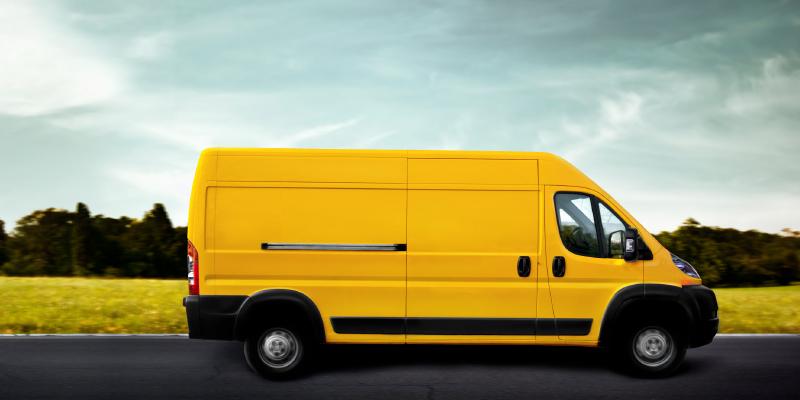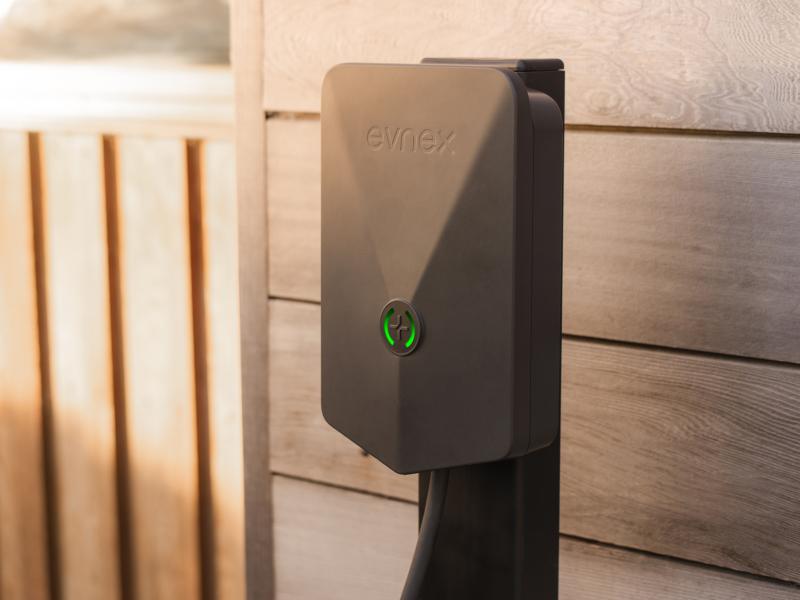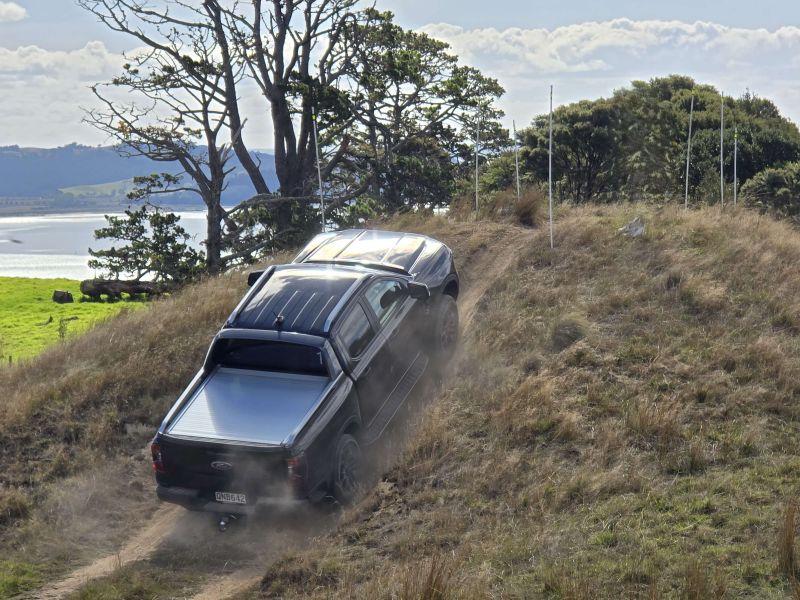Most of us have come to accept that the best way to transport loads from point to point is either with a van or a ute. While it is true that there are plenty of products out there to make load carrying convenient, effective and above all, safe; not every fleet has a handy ute or van at its disposal.
So it is that while we will look at what’s good for the conventional cargo carriers in 2018, it’s also – given the ever-increasing numbers of them on our roads – pertinent to look at what load carrying considerations have to be taken into account when the fleet consists of the ever-popular SUV.
Big boy boot-space
Your typical SUV has quite a good amount of luggage area, and this is by far and away, the best place to carry cargo, especially if your drivers are not used to load lugging or – shudder – driving with a trailer.
Most SUVs have a good flat floor boot-space with the rear seats folded down, but there are still some out there which don’t, so if moving bulk gear is something your cxompany tends to do frequently and often, you might want to check out the flat-pack ability of the rear seats.
Rooftop ratings
But there are times when you might want to think about using those factory-fitted roof rails. Yep, that’s a good plan, but there are some things you should be aware of when it comes to using roof rails on cars and SUVs.
Every vehicle has two rooftop weight limits – static and dynamic – and of these, the dynamic rating is the one that’s going to make or break what you can carry atop your four-wheeled friend. The dynamic rating is the computed weight a vehicle can carry when its being driven.
A typical medium SUV would likely be capable of carrying 75kg, minus the weight of the roof racks AND minus the weight of one of those handy dandy cargo pods. All told, this could conceivably limit your roof carrying capacity to 30kgs. Each vehicle is different, and the figures you want for the weight your vehicle’s roof can carry are found in the owner’s handbook.
Trailer towing
A rite of passage for every young driver – up until the time of the Millennials anyway – was towing the trailer. These days, skilled trailer towing seems to be a dying art form, with a great many new generation drivers never having experienced the rapturous joy of swinging into the driveway backwards and getting it right the first time.
A crash course on how to securely attach the trailer to the tow vehicle is prudent, lest a safety chain be forgotten or ignored. A quick check to make sure lights and indicators are hooked up and working is a good plan too, as is the examination of a braking system, should one be fitted.
Towing – despite experts making it look easy – is not something to be taken lightly. A mistake made while towing is not only likely to cause damage to company property – ie, the company vehicle – but also has the potential of damaging or injuring something – or someone – else.
All the above is food for thought for the SUV-laden fleet, what about the fleet vehicles specifically designed for load lugging; the utes and the vans? What’s the latest on equipment for them?
So glad you asked:
Whiteware on wheels
For vans of all shapes and sizes – alright, colours too – there is a wealth of load carrying accessories you can add to the ‘wish list’.
You or your FMC (fleet management company) will be negotiating with experienced van fit-out professionals, for the likes of bulkheads, anti-slip floor and inner panel protection, internal or external racking and shelving, lighting, cameras, ramps, false floors, security mesh and plating, bull bars and tow-bars.
The specialist firms found in this feature know the legal requirements your fleet vehicles will have to conform to once you have told the companies concerned what your needs are. After which, they can co-ordinate scheduling for the vehicles to be delivered, equipped and then passed on to you.
Ute-ilisation
What about the ute? Arguably the most popular method of moving cargo because it ticks so many other boxes – not least of which is its desirability – the ute of today needs a great deal of thought when it comes to determining which is best and what it then needs, in order for it to carry out its role as a stuff-shifter.
Your first fit-out consideration for a ute then, might well be the one which protects your vehicular investment: paint protection. There are two major options for this, one being more permanent than the other.
Paint on or drop in
The spray-on tray liner has many benefits, including chemical resistance, non-slip surface, and the fact that it doesn’t move. The downside? Spray-ons are permanent and a future buyer might not appreciate your selection of product or colour combination of choice.
Drop-in liners of course, can transfer from one vehicle to another, but they do have the ability to scratch paint as a direct result of this cost saving convenience, and they won’t necessarily protect the ute tub as well as a spray-on. There’s always a trade-off in the automotive world; but drop-in liners are the most popular solution in this instance.
Cover me!
Once the tub is taken care of, its time to look at lids, and again, you have a variety of options, first of which is the canopy.
You can have ABS plastic, fibreglass or pressed steel canopies and no doubt, someone will find some other substance that will ultimately suffice – though a canopy from recycled plastic bags is probably not on the horizon.
Typically, ABS plastic canopies have the lowest load rating – around 80kgs – with fibreglass a smidge better at 100kgs. If you are doing a lot of top deck carrying though, a pressed steel unit is good for 200kgs.
There are other considerations when it comes to canopies – access being a big one and security being another. Happily, companies offering ute canopies are pretty clued up about both and will prompt you to think about these things if you haven’t already.
The alternative to a canopy is a tonneau cover or hard-lid (same as the tonneau cover, but inflexible). The softer tonneau cover is not as fashionable as it once was, or possibly, ute drivers have had enough of the elasticised fabric being hard to hook up and painful to release. A fabric tonneau does offer you flexibility when it comes to oddly-shaped cargo however.
Hard-lids don’t have the flex, but they do offer greater security and can be opened either on gas struts from the rear only, giving you something akin to a fibreglass sail when it is open to accommodate irregularly-shaped cargoes, scissor struts which cleverly elevate the lid while keeping it on a horizontal plain or, in some sophisticated and specialised set-ups, rolling panels to offer a robust covering.
Hard lids serve dual purpose as a cover and a respectable load-bearing (are we seeing the common theme yet?) work surface, though they do restrict the height of any cargo you may be carrying, generally to the top of the tub – something to think about.
You can of course, look to equip your ute with roof rails or load racks to supplement the tray.
From canopies, to lids to full-on service bodies, the variety of ways to store stuff away from prying eyes is one of the attractions of the ute as a cargo carrier, but what about the efficiency of space?
In addition to cargo bed dividers, most fit-out suppliers have or can develop, sliding drawer systems to suit, and these are so good nowadays, you’d think they came from the vehicle manufacturer.
These systems are proving very popular with tradespeople, as in addition to storing items and keeping things where they should be, the systems are often inter-designed with specific tools and requirements of any particular trade.
Load carrying is something a great many vehicle users might have thought about, but probably not thought through well enough, because let’s face it; modern vehicles are larger, more versatile and certainly more capable.
As a fleet manager, it would be unreasonable to assume that one solution fits all and, even if you did have an idea of what sort of load-carrying solution your drivers might need, it’s a safe bet to assume there have been some improvements and changes made.
What has to be remembered however, is the duty of care you, as the fleet owner/business operator have, when it comes to looking after those who are driving in your owned/leased vehicles.
Perhaps you think you have a pretty good handle on the rules and regulations governing the carrying of cargo for work purposes.
If, however, you think you’re a little fuzzy on it, best bet is to talk to someone who is an expert, follow their advice and do right by your people, for their sake, the sake of your company and your own peace of mind.






